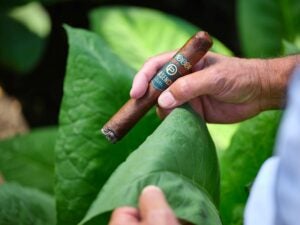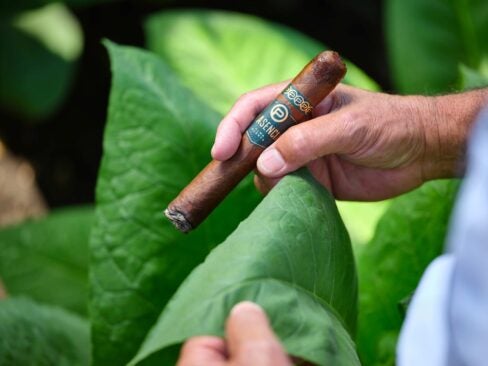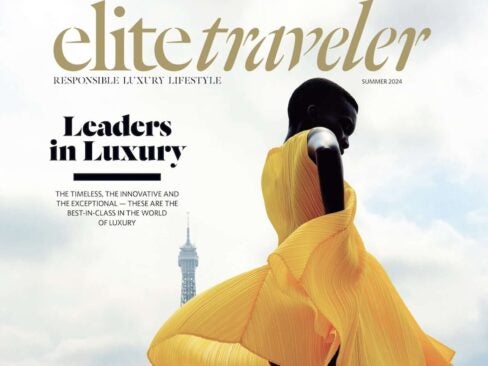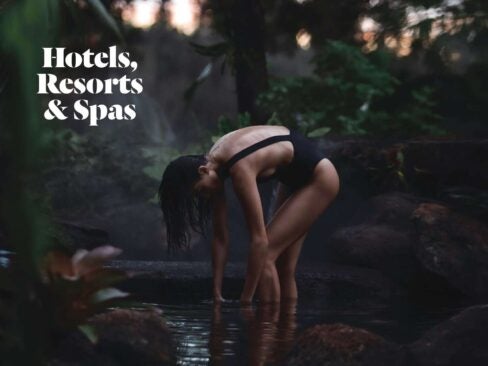This article originally appeared in Elite Traveler July/August 2016.
 Sometimes you need to do more than just hit the refresh button. Lauren Holmes travels to Sri Lanka and finds a new type of rest and relaxation that makes her feel whole again.
Sometimes you need to do more than just hit the refresh button. Lauren Holmes travels to Sri Lanka and finds a new type of rest and relaxation that makes her feel whole again.
What first convinced me to go to Sri Lanka wasn’t its ancient culture, over-layered by technicolor natural beauty, the elephant-rich national parks, nascent surf scene or even the fact you will be fed world-class curry for breakfast, but a concussion and two broken teeth. After an unfortunate encounter with a curb, a chain of referrals led me to the Wimpole Street office of Sri Lankan osteopath and healer Sam Kankanamge. As Sam set to calming my bruised head and befuddled nervous system, he spoke about the wellness sanctuary he was opening on a nature reserve along Sri Lanka’s secluded southern coast, set across from the most spectacular beach, pristine and protected thanks to the green, leatherback and hawksbill turtles who have laid their eggs there for centuries. His plan was to create a place of deep healing, where everyone from burnt-out creatives to sleepless entrepreneurs could go to reset through a unique program of western osteopathy, Kundalini yoga and ancient Ayurveda treatments. Eight months later, life had thrown me a series of curve balls that had defeated me. Surviving life rather than winning, I set off to see if the solution lay in the healing beauty and wellness wisdom of Sri Lanka.
When Sam left Sri Lanka for the UK in 1992, the country was in middle of a long civil war that only ended in 2009. His homecoming is synonymous with Sri Lanka’s blossoming into one of the world’s hottest travel destinations, with a host of interesting openings that range from Galle’s chic boutique hotel the Owl and the Pussycat to experiential jungle lodge Chena Huts. Yet despite the boom, Sri Lankans remain the friendliest and warmest of people, yet to be tainted by tiredness for tourism. We start our travels skirting the capital Colombo for a serious sleep in the Wallawwa, a 17-bed boutique hotel strategically set 20 minutes from the international airport in rural idyll. Colonial verandas frame crisp lawns and we snooze in the balmy shade by the emerald pool before massages in the Z Spa. With triple-height sloping ceilings and a four-poster bed, the Garden Suite is a haven of peace and we awake refreshed before boarding a helicopter for the 40-minute flight over a kaleidoscope of greens to touch down in the hills of tea country.
 While Sri Lanka’s hospitality scene has recently become hip, what it has long mastered is resurrecting the old-world elegance that lingers on from Sri Lanka’s days as British colony Ceylon. Few places conjure up the fantasy quite like Tea Trails, where five restored planter’s bungalows are scattered over 2,000 acres of working tea estates, crowned in mountains that fall away to national parks where jaguars pad and pilgrims hike to holy peaks. Preceded by a train of butlers, we settle into the Owner’s Cottage, a lavish private bungalow of gray stone, sleek teak, and velvet sofas set overlooking a magnificent African tulip tree, its red flowers brilliant against a valley of hazy layered blues. Opened in February, it offers an extra level of privacy to the other bungalows, which are shared with other guests.
While Sri Lanka’s hospitality scene has recently become hip, what it has long mastered is resurrecting the old-world elegance that lingers on from Sri Lanka’s days as British colony Ceylon. Few places conjure up the fantasy quite like Tea Trails, where five restored planter’s bungalows are scattered over 2,000 acres of working tea estates, crowned in mountains that fall away to national parks where jaguars pad and pilgrims hike to holy peaks. Preceded by a train of butlers, we settle into the Owner’s Cottage, a lavish private bungalow of gray stone, sleek teak, and velvet sofas set overlooking a magnificent African tulip tree, its red flowers brilliant against a valley of hazy layered blues. Opened in February, it offers an extra level of privacy to the other bungalows, which are shared with other guests.
Days begin with a gentle knock on the door and ‘bed tea’ served by our private butler, before soaking up the crisp mountain morning from our hot tub and tucking into extravagant breakfasts of curries steeped in spices, coconut hoppers, buffalo curd with kithul treacle and palatial pots of the estate’s own cinnamon tea and coffee. While it’s all enough to warrant a snooze on the terrace, the real fun of Tea Trails lies in the trekking of the working plantation, stopping for lunch at one of the other bungalows. Whether arriving after a five- or 15-mile hike, our efforts are always rewarded with the offer of a gin and tonic as 1920s jazz drifts from the gramophone. Life at this gentle pace is full of grace.
When it’s time to venture to the coast, we skip the arduous five-hour drive for a 30-minute seaplane flight that lands on the lake just below our bungalow – a relatively recent service that has opened up the country for the time-poor traveler. We soar over mountain settlements, flitting through towers of clouds until we land on the tropical lagoon of Koggala Lake where a restored dhoni – a traditional wooden boat – awaits to glide us the short ride across the dusky teal waters to Tri, a contemporary chill-out retreat opened in December 2015 by British expat Robert Drummond and his wife Lara, a yoga teacher and founder of Quantum Yoga. It’s as forward thinking as Sri Lanka’s latest openings come. There’s such an air of simplicity that it’s almost a surprise to see Tri peeping through the mango trees, as sleek and secluded as a James Bond villain’s hideout. Gazing out over the edge of the cantilevered infinity pool vacationing hedge-funders sip beetroot martinis, while up on the lawn couples share sashimi platters and sip green juices under the boughs of a magnificent 200-year-old banyan tree. We sleep in a light-filled suite crafted in wood from local jackfruit trees, with its own plunge pool and a secluded balcony overlooking the lake.
One morning, we head out on the dhoni with Douglas, the cheerful boatman, to visit nearby Cinnamon Island. Here, we sip fresh cinnamon tea while watching the islanders strip the bark by hand, Douglas shinning up trees like a monkey to pluck rosy guavas and golden star fruit to tide us over until breakfast – delicate coconut jelly, coconut porridge, grilled duck, poached egg and home-grown greens taken on the terrace. As nutritionally forward-thinking as it is delicious, Tri’s cuisine is centered upon organic, locally sourced produce and rich, fusion flavors. It’s all part of a holistic approach to health, which combines a handful of yoga classes with a roster of visiting therapists. Yoga buffs can also book in for a bespoke program with Lara, who assesses your prakriti (nature) and dosha (constitution) based on Ayurveda principals and then devises a practice specific to you.
But while bronzed and relaxed after a week of all-star service, designer locations and fabulous food, I haven’t shaken the shadows I brought with me. So it’s with trepidation and hope that we set out for the final stop of our journey, Sam’s sanctuary, Breath of Life in Rekawa Beach. Arriving late at night, it feels far simpler than the lavish trappings we have left behind and, with no distractions, I spend a sleepless night as anxiety knocks.
Awoken at 5am with a rich herbal tea, we stumble sleepily down the jungle path as dawn breaks over a paradise beach and the turquoise Indian Ocean shakes itself from a haze of pastel pinks. Our sunrise yoga session is soon interrupted by a turtle emerging from a bush to slide back to sea after a night of nesting. In the light of day, the sanctuary is an organic beauty, with treatment rooms, a yoga shala (or, a ‘place of yoga’) and daybeds for reading set in a central, circular atrium where a giant Buddha statue greets all who enter. Set in the nature reserve, thatched circular huts combine soaring ceilings with wooden ventilation slats built into the walls, so you sleep with the breeze and the gentle roar of the ocean, rather than air conditioning. The sanctuary runs year-round with a roster of expert therapists and can be privatized for bespoke programs lead by Sam.
Our stay begins with an in-depth consultation with soft-spoken Ayurveda specialist Dr Harshi, who decodes your body, defining your dosha (if you are an earth, wind or fire type) by reading your pulse. Originating in ancient India, the purpose of the holistic system of Ayurveda is to promote long life, providing us with knowledge about our individual blueprint so we can make better lifestyle choices. With medicines and oils derived from plants and herbs, it’s no quick miracle cure – two weeks is what you need to do the full panchakarma detoxification and reset the system on a fundamental level. It may sound simple, but it works. Daily Ayurveda is combined with osteopathy to realign and open up both body and mind, and book-ended with sunrise and sunset Kundalini yoga sessions to prompt the release of emotional traumas.
Thanks to daily shirodhara treatments, where warm oil is dripped across the forehead to calm anxious minds, I start to enjoy depths of sleep I haven’t experienced since I was a teenager. My transformation is not unique and I’m surprised by its effectiveness across the board; I watch an 80-year-old guest break down in tears of gratitude as he lets go of the past, while a recently separated woman smiles again after taking the first steps to forgiving herself. Used to hardcore detox retreats where I look amazing for two weeks before reverting to old patterns, here the experience is reversed. If I was worried it all appeared too gentle to have any lasting effect, I couldn’t have been more wrong. One month later, I feel more balanced and energized than I have in years thanks to the knowledge of how to look after myself. As global interest in health and wellness soars, I can think of few better gifts than a total reset amid Sri Lanka’s peaceful beauty.










